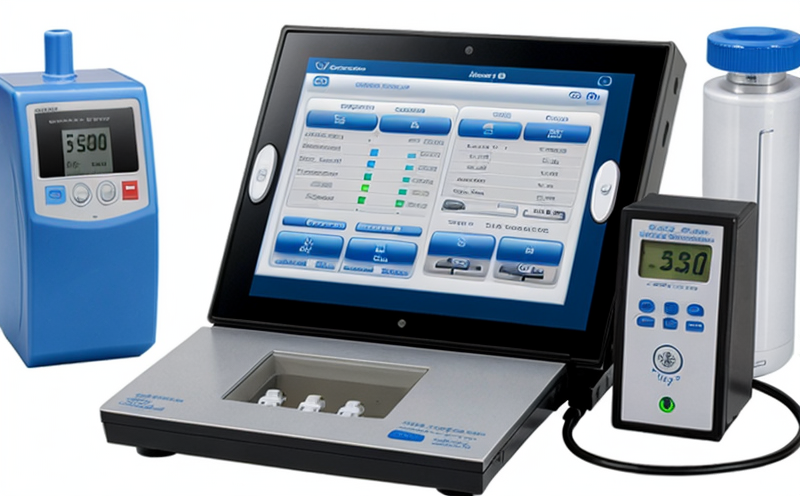ISTA Distribution Simulation Testing of Packaged Infusion Devices
The ISTA (International Safe Transit Association) method for distribution simulation testing is a critical tool in ensuring that medical devices, including packaged infusion pumps and drug delivery systems, can withstand the rigors of transportation. This method simulates real-world conditions to evaluate the durability and integrity of the packaging during shipping.
During this test, packages are subjected to various environmental factors such as temperature, humidity, vibration, and pressure changes that mimic actual transit scenarios. The objective is to identify any potential weaknesses in the packaging design or material composition that could compromise the safety and efficacy of the medical device.
The testing process involves several steps:
- Preparation of the packaged infusion devices
- Placement into a standard test fixture designed for ISTA testing
- Application of environmental stress to replicate transportation conditions
- Evaluation of packaging integrity and device functionality post-test
The results from these tests provide valuable insights into the robustness of the packaging design, which is essential for compliance with regulatory requirements. This testing ensures that medical devices meet not only safety standards but also maintain their performance throughout distribution.
| Environmental Factors | Description |
|---|---|
| Temperature Cycling | Varying temperatures from extreme cold to heat to simulate different climates during transit. |
| Humidity Control | Maintaining humidity levels to ensure that moisture does not affect the packaging or device performance. |
| Vibration Testing | Reproducing the vibrations experienced in vehicles and shipping containers to assess resilience of packaging. |
| Pressure Changes | Simulating altitude changes that might occur during air transport, ensuring the package can handle these conditions. |
For quality managers and compliance officers, ISTA testing is crucial for verifying product integrity. It helps in identifying packaging improvements needed to meet regulatory standards such as ISO 13485 and FDA regulations for medical devices. For R&D engineers, this test offers a practical way to refine designs based on real-world conditions, ensuring that the device remains functional post-transportation.
ISTA distribution simulation testing is particularly important for packaged infusion pumps and drug delivery systems as it ensures that these critical medical devices are protected during transit, maintaining their effectiveness and safety. This service plays a vital role in minimizing risks associated with transportation-induced damage, thereby enhancing patient safety and satisfaction.
Applied Standards
| Standard | Description |
|---|---|
| ISTA 6 | Replicates the conditions found in ocean-going vessels, including temperature and humidity variations. |
| ISTA 7 | Mimics air transportation conditions by applying changes in altitude and pressure. |
| ISTA 8 | Simulates ground transport scenarios with a focus on vibration and impact testing. |
The ISTA distribution simulation test for packaged infusion pumps adheres to these standards, ensuring that the packaging meets rigorous durability requirements. Compliance with these internationally recognized standards provides peace of mind for manufacturers and distributors by guaranteeing that their products can withstand the challenges of global transportation.
Benefits
The ISTA distribution simulation testing service offers numerous benefits to medical device manufacturers, including enhanced product safety, improved regulatory compliance, increased market confidence, and reduced risk of product failure. By simulating real-world conditions, this testing ensures that packaged infusion devices remain functional after transportation.
For quality managers, the test provides a reliable method for assessing packaging integrity and identifying areas for improvement. It helps in achieving stringent regulatory requirements such as ISO 13485 and FDA regulations, which are crucial for maintaining product safety and efficacy.
Compliance officers benefit from this service by ensuring that all aspects of distribution are within acceptable limits, thereby reducing the risk of non-compliance with international standards. R&D engineers can use the results to refine packaging designs based on real-world conditions, leading to more robust and effective medical devices.
The overall impact is a significant reduction in product failures during transportation, which enhances patient safety and satisfaction. This service also supports continuous improvement in packaging design, ensuring that packaged infusion pumps and drug delivery systems can be safely delivered worldwide.
Competitive Advantage and Market Impact
- Prioritizes patient safety by ensuring product integrity during transportation.
- Achieves compliance with stringent international standards for medical devices.
- Enhances market confidence through reliable testing results.
- Maintains a strong competitive edge in the highly regulated medical device industry.
- Reduces risks associated with product failure and recall.
- Promotes continuous improvement in packaging design to meet global transportation challenges.
The ISTA distribution simulation testing service is a key differentiator for medical device manufacturers. By ensuring that packaged infusion devices can withstand the rigors of transportation, this service helps companies achieve competitive advantages. It also supports market confidence and regulatory compliance, which are essential in today’s highly regulated environment.





